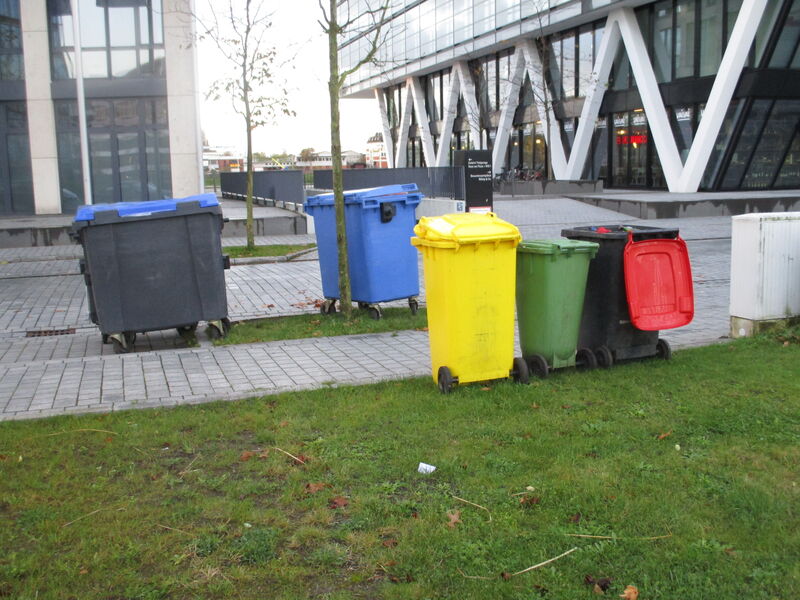Pisa disgrace: numbers coma ends
Mathematics in the spotlight: How teachers end PISA slumber and turn students into arithmetic masters
Welcome to the ring of math misadventures, better known as our educational circus. The fresh PISA results have once again revealed the dilemma: our students are as disorientated in mathematics as a dog in front of a chessboard. But before we get lost in a tissue drama, let's take a look at how our teachers can free their sheep from their mathematical slumber.
Spiced up math books:
No more sleeping pill chapters! How about replacing boring math books with more exciting ones that guide you like a mind map through the 'Amazing World of Square Roots' or 'The Secret Affair of X and Y'? Students could use mind maps to bring structure to the world of numbers. Because who says math can't be sexy?
Math in Multitasking Mode:
Why just focus on numbers when you can juggle, ride a unicycle and master math at the same time? Teachers could introduce circus skills and bring structure to the classroom. A structured approach, comparable to juggling different elements, could increase attention. Because who says that you can't combine mental arithmetic with a handstand pyramid?
Formulas in Text Tango:
No more clear equations! How about students hiding their math formulas in a written maze? Once again a brilliant idea to take students not only into the wonderful world of mathematics, but also into the magic of language acrobatics. It's almost as if we were teaching students to translate the secret language of mathematics into a difficult-to-understand word problem.
Mathematics Fashion:
Why not start a math fashion trend? Students could walk through the school hallways with equations on their T-shirts or show off their geometric outfits in a math runway competition. Numbers become a stylish statement, comparable to a structured fashion show.
Trigonometry TikTok Tutorials:
Instead of dry instructional videos, teachers could go on TikTok and create short, entertaining math tutorials. Diagrams and visual representations could illustrate the abstract concepts. Because on TikTok, students can understand even complex dance steps in record time. So why not use the law of cosines in the rhythm of TikTok?
The PISA study may hold a mirror up to us, but that doesn't mean we can't react to it with a wink. Maybe we need less dry theory and more math entertainment to wake our students from their number coma. Because who knows, maybe math will no longer just be seen as a compulsory subject, but as the coolest party in school - a structured step towards mathematical euphoria!
The information has not(!) been checked. I don't care if the facts are correct, as long as the statements are consistent with the current delusion about how one should perceive reality today according to the general mainstream. For translations from German to English or French, we relied on translate.google.de. Dr. Dieter Porth
![[Translate to Düddelei - a TYPO3 experimental platform:]](/fileadmin/_processed_/1/8/csm_Der_Himmel_brennt_ee3011a7ab.jpg)
![[Translate to Düddelei - a TYPO3 experimental platform:]](/fileadmin/_processed_/9/a/csm_Wenn_keiner_kuckt_kann_man_entsorgen_d40bc82f7e.jpg)
![[Translate to Düddelei - a TYPO3 experimental platform:]](/fileadmin/_processed_/6/a/csm_Dr_Rotbart_40e0b624a5.jpg)
![[Translate to Düddelei - a TYPO3 experimental platform:]](/fileadmin/_processed_/e/1/csm_Weserbankbesetzer_193d518d1c.jpg)
![[Translate to Düddelei - a TYPO3 experimental platform:]](/fileadmin/_processed_/7/5/csm_Dr_Blaubart_998911feec.jpg)
![[Translate to Düddelei - a TYPO3 experimental platform:]](/fileadmin/_processed_/3/5/csm_Kirche_mit_wolkigen_Hintergrund_ea235d07e7.jpg)
![[Translate to Düddelei - a TYPO3 experimental platform:]](/fileadmin/_processed_/f/5/csm_Bauromantik_40a90e519c.jpg)
![[Translate to Düddelei - a TYPO3 experimental platform:]](/fileadmin/_processed_/d/6/csm_Beobachter_des_Regenbogens_895fb610bc.jpg)
![[Translate to Düddelei - a TYPO3 experimental platform:]](/fileadmin/_processed_/8/1/csm_Regenbogen-Attacke_0600290371.jpg)
![[Translate to Düddelei - a TYPO3 experimental platform:]](/fileadmin/_processed_/a/e/csm_Dr_Gruenbart_491dca5239.jpg)
![[Translate to Düddelei - a TYPO3 experimental platform:]](/fileadmin/_processed_/a/2/csm_Abendromantik_af46eefaa3.jpg)
![[Translate to Düddelei - a TYPO3 experimental platform:]](/fileadmin/_processed_/0/4/csm_UEberall_gibt_es_eine_Tuer_7458cd4b33.jpg)
![[Translate to Düddelei - a TYPO3 experimental platform:]](/fileadmin/_processed_/f/d/csm_Morgenstimmung_im_Bremer_Bahnhof_42cd8ff28a.jpg)
![[Translate to Düddelei - a TYPO3 experimental platform:]](/fileadmin/_processed_/6/4/csm_Rotlicht_fuer_Kelloggs_in_Bremen_781841cecf.jpg)
![[Translate to Düddelei - a TYPO3 experimental platform:]](/fileadmin/_processed_/3/5/csm_Flutwelle_in_die_kleine_Werder_in_Bremen_52e978a1a7.jpg)
![[Translate to Düddelei - a TYPO3 experimental platform:]](/fileadmin/_processed_/a/f/csm_Abendstimmung_in_Bremen_beebf1f2e1.jpg)
![[Translate to Düddelei - a TYPO3 experimental platform:]](/fileadmin/_processed_/a/7/csm_Dr_Blaubart_im_Park_2d63c9df68.jpg)
